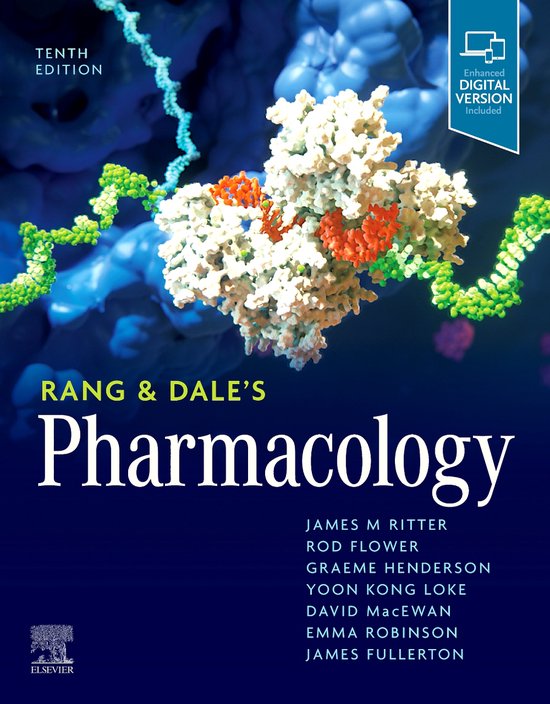
Pharmacology
"Pharmacology" is now established as a worldwide best-selling and highly acclaimed textbook for medical and science students. In this fifth edition, as in the previous four, the approach has been not just to describe what drugs do but to emphasise the mechanisms by which they act - where possible at the cellular and molecular level. Therapeutic agents have a high rate of obsolescence and new ones appear each year. An appreciation of the mechanisms of action of the class of drugs to which a new agent belongs provides a good starting point for understanding and using the new compound intelligently. Pharmacology is a lively scientific discipline in its own right, with an importance beyond that of providing a basis for the use of drugs in therapy. The book therefore, where appropriate, includes brief coverage of the use of drugs as probes for elucidating cellular and physiological functions, even when the compounds have no clinical uses. The fifth edition retains the short summaries of relevant physiological and biochemical processes placed at the beginning of most chapters to form a basis for the subsequent discussion of pharmacological actions.;As before, short sets of key points are placed in boxes throughout the text. These are not intended as comprehensive summaries but rather to highlight pharmacological information that the authors consider important. Factual knowledge in "pharmacology" is so extensive and expanding so rapidly that students can easily find the information load daunting, and these key points are intended to make it easier for students to gets to grips with the essentials of the subject. As in the previous edition, the therapeutic use of drugs has been given prominence by setting it out in easily identified 'clinical boxes'. For the Fifth Edition, the book is presented in full colour with a new page format and design. Most diagrams have been updated and all have been redrawn in colour, while many new figures have been added. Continuing the approach used in earlier editions the illustrations, wherever feasible, use real data rather than notional information. As previously, the emphasis is placed on the chemical structures of drugs for where this information helps in understanding how the drugs act.;All chapters have been updated and an 'Overview' section has been introduced at the beginning of each to help the reader get a flying start on that topic. In including new material, the book takes into account not only new agents but also recent extensions of basic knowledge which presage further drug development, and, where possible, gives a brief outline of new treatments in the pipeline. New 'small print' sections have been included in many chapters. These contain more detailed, sometimes speculative, material, which can be skipped by the reader in a hurry without losing the main thread, but will be of interest to readers wishing to go into greater depth. As before, the book includes fairly extensive sections on 'References and further reading' at the end of each chapter. Because the medical curriculum stresses project work and the preparation of special study modules, references have been annotated to emphasize the main aspects of their coverage and so make the Reference section easier for students to use.
| Auteur | | Rang |
| Taal | | Engels |
| Type | | Paperback |
| Categorie | | Geneeskunde & Verpleging |





